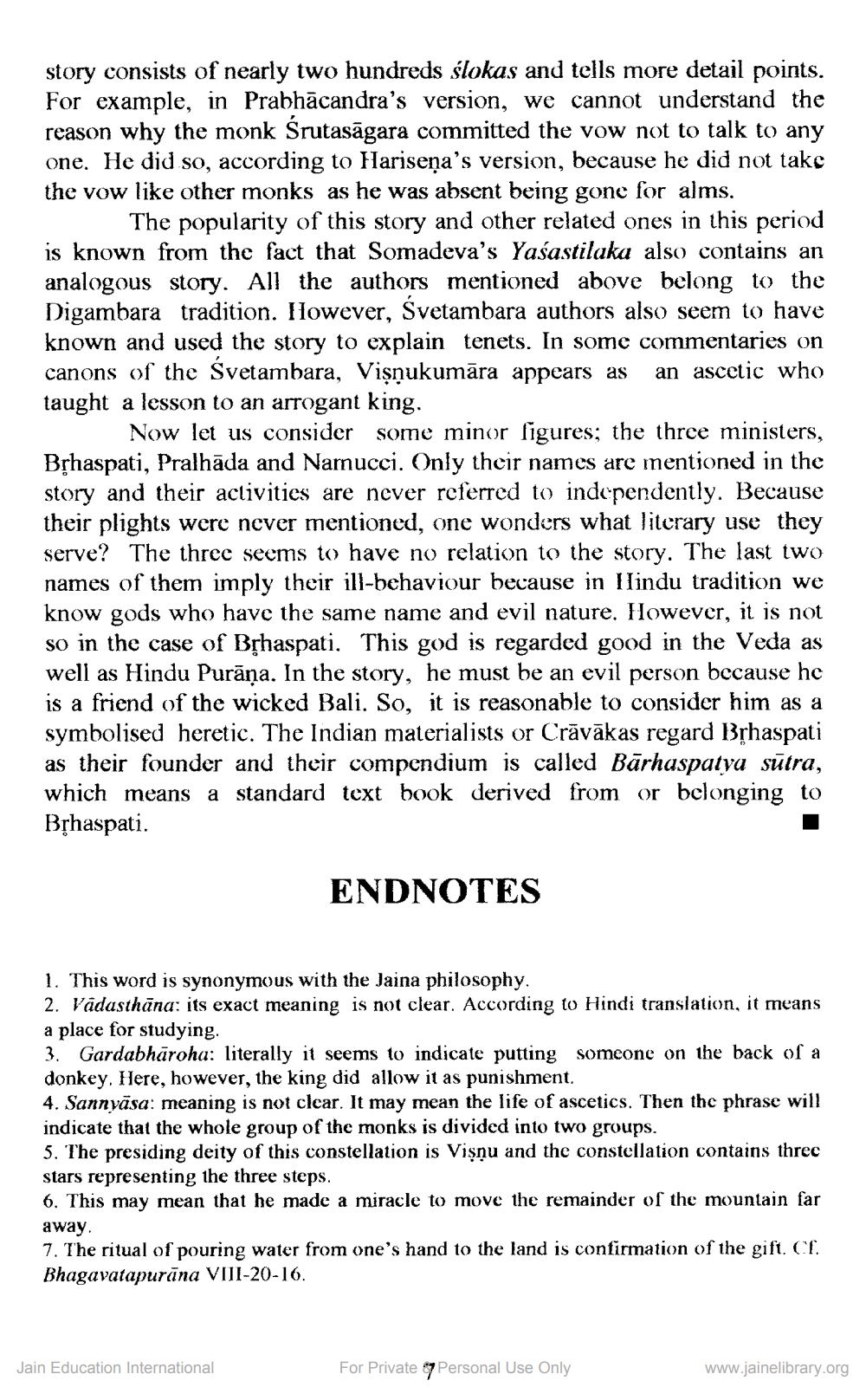Book Title: Jinamanjari 1998 09 No 18 Author(s): Jinamanjari Publisher: Canada Bramhi Jain Society Publication View full book textPage 9
________________ story consists of nearly two hundreds slokas and tells more detail points. For example, in Prabhācandra's version, we cannot understand the reason why the monk Śrutasagara committed the vow not to talk to any one. He did so, according to Harisena's version, because he did not take the vow like other monks as he was absent being gone for alms. The popularity of this story and other related ones in this period is known from the fact that Somadeva's Yasastilaka also contains an analogous story. All the authors mentioned above belong to the Digambara tradition. However, Svetambara authors also seem to have known and used the story to explain tenets. In some commentaries on canons of the Svetambara, Viṣṇukumāra appears as an ascetic who taught a lesson to an arrogant king. Now let us consider some minor figures; the three ministers, Bṛhaspati, Pralhāda and Namucci. Only their names are mentioned in the story and their activities are never referred to independently. Because their plights were never mentioned, one wonders what literary use they serve? The three seems to have no relation to the story. The last two names of them imply their ill-behaviour because in Hindu tradition we know gods who have the same name and evil nature. However, it is not so in the case of Bṛhaspati. This god is regarded good in the Veda as well as Hindu Purana. In the story, he must be an evil person because he is a friend of the wicked Bali. So, it is reasonable to consider him as a symbolised heretic. The Indian materialists or Crāvākas regard Bṛhaspati as their founder and their compendium is called Bārhaspatya sūtra, which means a standard text book derived from or belonging to Bṛhaspati. ENDNOTES 1. This word is synonymous with the Jaina philosophy. 2. Vādasthāna: its exact meaning is not clear. According to Hindi translation, it means a place for studying. 3. Gardabharoha: literally it seems to indicate putting someone on the back of a donkey. Here, however, the king did allow it as punishment. 4. Sannyasa: meaning is not clear. It may mean the life of ascetics. Then the phrase will indicate that the whole group of the monks is divided into two groups. 5. The presiding deity of this constellation is Viṣņu and the constellation contains three stars representing the three steps. 6. This may mean that he made a miracle to move the remainder of the mountain far away. 7. The ritual of pouring water from one's hand to the land is confirmation of the gift. Cf. Bhagavatapurana VIII-20-16. Jain Education International For Private Personal Use Only www.jainelibrary.orgPage Navigation
1 ... 7 8 9 10 11 12 13 14 15 16 17 18 19 20 21 22 23 24 25 26 27 28 29 30 31 32 33 34 35 36 37 38 39 40 41 42 43 44 45 46 47 48 49 50 51 52 53 54 55 56 57 58 59 60 61 62 63 64 65 66 67 68 69 70 71 72 73 74 75 76
